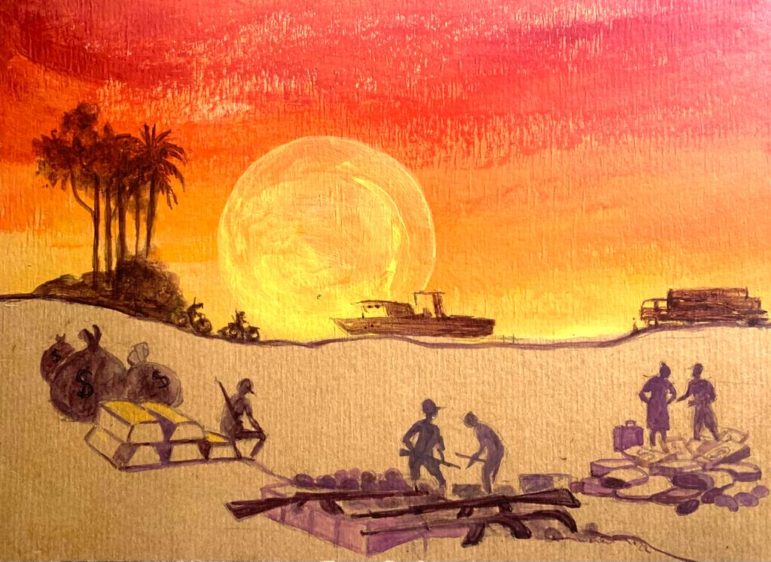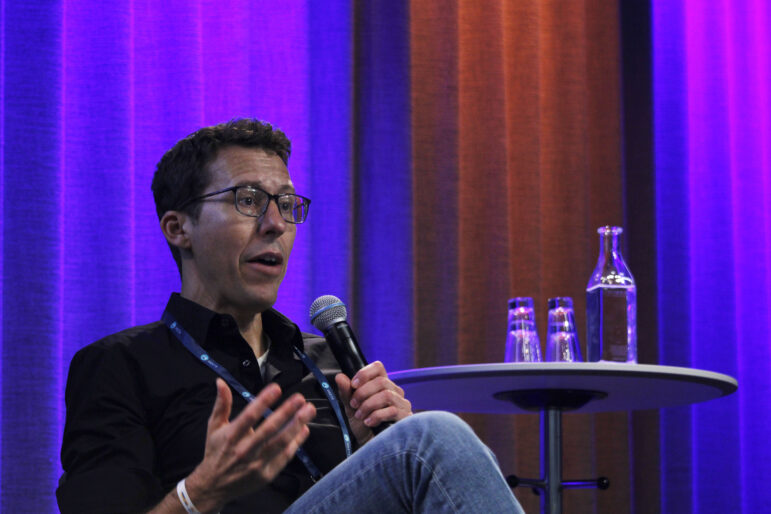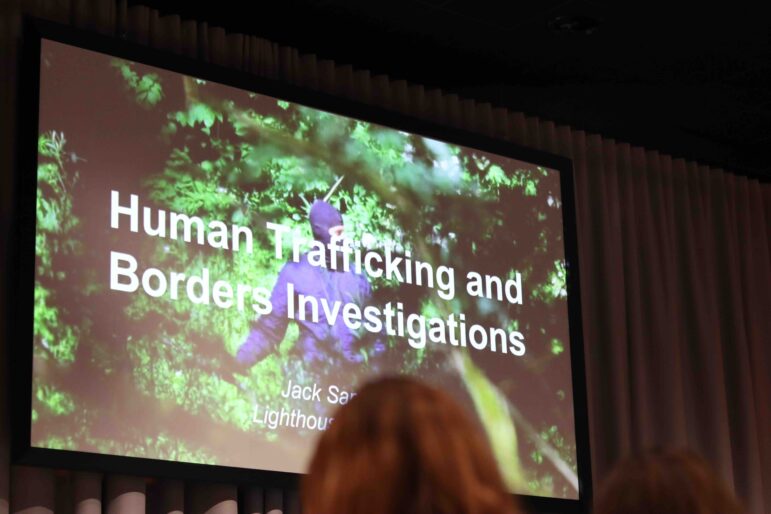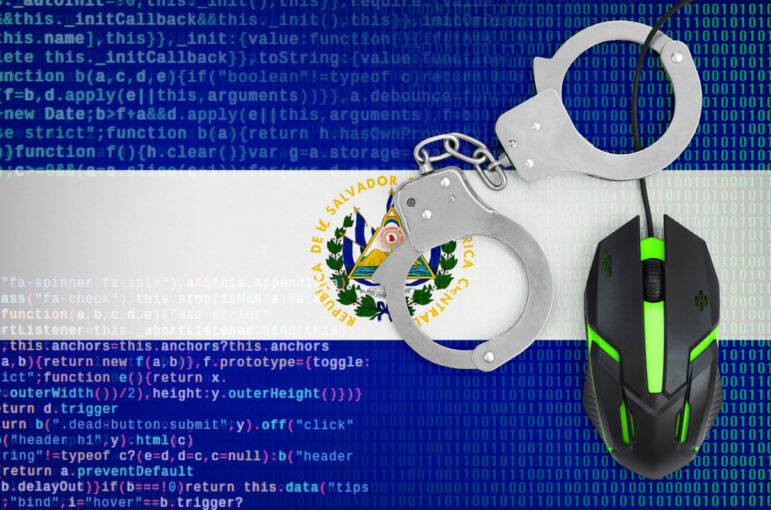

The concept of child labor, Poor children are forced to work in construction, Violence children and trafficking concept, Rights Day, World Day Against Child Labour concept
Best Practices for Staying Safe While Investigating Human Trafficking
Read this article in

Men, women, and children of all ages and from all backgrounds can become victims of human trafficking, according to the United Nations Office of Drugs and Crime. Image: Shutterstock
“What we’re doing when investigating human trafficking is investigating crime,” according to the Guardian’s Annie Kelly, editor of a reporting series on modern slavery, trafficking, and labor exploitation. “You are dealing with a criminal industry, which presents risks to yourself and your local sources, or anyone you partner with.”
Speaking during a JournalismFund.eu webinar, Kelly and co-panelist Ian Urbina — founder of the nonprofit Outlaw Ocean Project, which reports on worker exploitation and environmental violations at sea — spoke of their experiences documenting human trafficking around the world, and the safety challenges they encountered along the way.
Both journalists have reported on and edited stories about labor exploitation in supply chains, cross-border modern slavery, and human trafficking, and their investigations often expose the true cost of globalized industries.
“We’ve really tried to look at the things we all use, consume, wear, and tell the stories of those people at the bottom of those supply chains and tried to expose how labor exploitation and human trafficking … are allowed to flourish in these systems,” said Kelly.
Deep-dive investigations like these can take months, and require precise planning and coordination to mitigate the risks to reporters and their sources. And yet even with extensive planning, work in this area can remain dangerous due to the unpredictable nature of the reporting landscape.
“The reality is, when you get on the ground, everything shifts based on what sources you need,” Urbina said. Yet, his team spends months planning investigative reporting trips — something that is vital to keeping the team safe.
Urbina detailed the process his team followed when reporting on the path of sub-Saharan migrants traveling to Libya, then Lampedusa, Italy. Among the tips he recommends:
- Divide into complementary teams: For The Ocean Outlaw Project investigation, that meant the creation of an “on-land” team, which pursued research into the Libyan migrant detention centers and investigated the death of a migrant in one of those centers, and an “offshore” team, which had a five-week embed aboard a ship chartered by the medical aid organization Doctors Without Borders.
- Plan your route and exit strategies: Urbina said that pre-trip meetings focused on laying out the day-by-day itineraries and assessing the risks for each step of the way. Once the security assessment was completed, the team set up emergency protocols in case they were arrested or detained (emergency contacts, helpful sources in the country and abroad).
- Conduct daily check-ins: The embedded team had a policy to verbally check in with the on-land team via satellite phone every six to 12 hours. Thanks to their staff working remotely across different countries, two people would be online at all hours to communicate with the offshore team.
- Create an emergency document: Urbina and his team spent time updating a “one-stop-shop document that has every single phone number of everyone you might want to contact, and in what order, and in what scenario, and what they’re good for,” he explained. This list includes US contacts from the White House, Congressional staff, and law enforcement. It also has regional and country-specific contacts at reliable organizations such as the Red Cross, Human Rights Watch, and Amnesty International.
- Know everyone’s — and everything’s — insurance policy: Obtaining and understanding insurance for reporters as well as the expensive equipment you’re bringing along is essential, Urbina advises. Make sure you get appropriate medical coverage and equipment protection and know how to make claims.
No matter how well you prepare, Urbina said, understand there are risks inherent to investigating human trafficking: “The more complicated the place you’re going into, the harder it is to maintain these [safety] lists.”
Because most reporting The Outlaw Ocean Project does is at sea, its operating protocols face constant challenges, such as the lack of connectivity preventing scheduled communications.

Migrants rescued off the coast of Libya aboard a rescue vessel operated by Doctors Without Borders. Image: Ed Ou, courtesy of The Outlaw Ocean Project
Safety While Reporting
Not drawing attention to yourself from the onset is preferable, but your journalist status may save you from tricky situations: “If possible, do go in with accreditation,” Kelly advised.
In 2013, Guardian reporter Pete Pattisson investigated Qatar’s use of forced labor in preparation for the 2022 World Cup. Kelly and her team worked to help protect Pattisson while in Qatar as well as his sources — vulnerable people forced to work and live in migrant camps.
Because the story had not yet been extensively reported, Pattisson enjoyed “relative” safety when he started investigating locally. He entered the country with his own passport as a tourist, to avoid drawing unwelcome attention from the government.
The strategy was to operate nimbly, and as anonymously as possible, Kelly explained. She recommended the following for reporters working in similar conditions:
- Don’t linger: Moving between locations quickly can mean reporters evade detection. In the Qatar example, the reporter never spent over 45 minutes in one location, to avoid drawing attention to himself.
- Assess road accessibility: In the risk assessment before Pattisson’s departure, the team made sure the labor camps he would visit were accessible by road. Any time the reporter would head for a camp, he would alert a trusted contact in Qatar and one outside the country of his journey.
- Change locations often, meet at different times: Kelly suggested that reporters don’t stay in the same hotel more than two days at a time, and schedule meetings at varying locations and times.
- Use burner phones: Changing SIM cards frequently may help secure your communications.

Construction site of a football stadium in Doha, Qatar, in preparation for the men’s 2022 World Cup. Image: Shutterstock
Pattisson also checked in with his editor, Kelly, twice a day. Before the trip, the team had contacted local and international NGOs to ensure good communications while Pattisson was in Qatar.
Urbina shared these additional tips to stay safe while reporting:
- Wear a satellite tracking device: If you can afford to, consider buying a satellite location device. All Outlaw Ocean Project staff wear small Garmin tracking devices attached to their belt. These have a SOS code and are connected by satellite.
- Essentials to carry at all times: Reporters on the offshore team always have local currency in cash, their passport, identification card, and copies of a laminated card containing essential information on their person. The cards list any allergies, the person’s blood type, and other vital information for health emergencies. Reporters hide them under the sole of every shoe and in secret backpack compartments. This kit is important in case reporters are split up or their belongings are confiscated.
- Assess goals and safety daily: Checking in and discussing ambitions for the next day is important. The team adapts to circumstances as their trip progresses and change their itinerary as needed. They also proactively check whether everyone on the ground feels comfortable with the plan each day, giving them the option to sit out the day if needed.
Trust your Instincts
Both journalists highlighted the importance of trusting your gut feeling when it comes to personal safety, exiting situations where you don’t feel comfortable, even if you can’t clearly identify the source of danger.
They suggest reporters follow these basic rules when conducting interviews:
- Avoid scheduling interviews at night, and in bars or situations where people are drinking alcohol.
- Get in, get out. Do not spend hours at the same location. The longer you stay somewhere, the more at risk you are of people noticing your presence and intervening.
- Don’t meet victims of human trafficking at their home or workplace. Kelly and Urbina recommend talking at bus stops, restaurants, or other safe places away from the victim’s daily environment.
- Have a cover activity. When reporting at sea, Urbina recommends engaging in some activity on the ship while talking with a source, to make it less obvious to onlookers that you’re conducting an interview. “That, in a weird way, can provide cover that can be helpful later on,” Urbina said. Kelly added that one reporter in Qatar even conducted interviews on a carousel — riding horses to disguise his reporting.
Urbina recommends keeping track of your sources for their own well-being, as well as for your journalism. If a source isn’t comfortable giving their phone number, ask if they will put you in touch with a relative in their home country that both you and the source can communicate through as an intermediary.
Investigating at Home
Investigating human trafficking in your own country poses an additional challenge: you don’t have the option to leave, as a foreign journalist would, once the story is published.
“Making sure you have people above you that are supporting you and supporting your stories is crucial,” Kelly said. She advised partnering with a bigger — or international — organization with the leverage to help.
Building your presence on social media to increase your public visibility may also help.
“Where parachutist reporters have a clear advantage of getting an exit, I think local reporters can and should, by being there, think of long-term relationships with powerful people in the country,” Urbina advised.
That means building a human rapport with police agents, lawyers, and others who can protect you as you investigate a long-term story.
Finally, it’s essential you develop an understanding of your country’s laws to be able to operate safely — specifically media and liability laws.

Ian Urbina aboard an Indonesian patrol ship called the Macan as it chases several Vietnamese fishing ships in a contested area of the South China Sea. Image: Courtesy of Urbina
Journalism or Advocacy? What Do You Owe Your Sources
The panelists addressed how journalists’ sense of responsibility towards their sources has changed. It’s now common to stay involved with one’s sources after the story is published, which may bring you to question the line between reporting and advocacy work.
“I think that follow-up commitment 25 years ago was not kosher, you know,” Urbina said. “There was a much bigger wall between journalism and ‘advocacy,’ but now I think there’s not just a comfort level but an expectation that you, as a journalist, have a duty to be thinking about what’s going to happen to the sources — whether they’re named or not — after the story breaks.”
Investigative journalists at the Guardian also face the ethical dilemma of assessing what they owe their sources. Editors and reporters converse throughout the investigation to determine the best course of action, and follow certain basic precautions.
“In our attempts to bring color and narrative to the story, we’re not giving away any indication, any kind of identifying features that could then lead to those workers being identified,” Kelly said. “If we are talking to agency workers, for instance in factories, we’re making sure that the workers cannot be identified.”
Kelly said her team goes beyond the Guardian’s editorial code to protect its sources — where needed, it guarantees anonymity, and strips any information about a source’s family, home, or the agency they may work for.
Kelly added that making sure you’re staying true to your sources’ story is essential, but so is thinking about the impact of your reporting on their life. Part of protecting your sources comes in the form of managing their expectations, by listing the possible harmful outcomes of your investigation, as well as telling them what you hope the project will bring about.
Urbina recommended “having a really sober and candid conversation at the outset with the source about what you plan on doing with the information, and what probably won’t or will happen.”
Finally, Kelly noted, it’s always important to ask: “Is the story worth the risk to yourself and others?”
Watch the full webinar below.
Additional Resources
Tips for Reporting on Human Trafficking and Forced Labor
Freelancing: Safety and Security
Human Trafficking, Forced Labor, and Slavery Reporting Guide
 Smaranda Tolosano is GIJN’s editorial coordinator for partnerships & translations and a French-Romanian freelance journalist. She has lived and reported in the US, France, Canada, and Morocco. In 2016-17, she covered the last days of France’s largest refugee camp, the “Jungle” in Calais.
Smaranda Tolosano is GIJN’s editorial coordinator for partnerships & translations and a French-Romanian freelance journalist. She has lived and reported in the US, France, Canada, and Morocco. In 2016-17, she covered the last days of France’s largest refugee camp, the “Jungle” in Calais.











